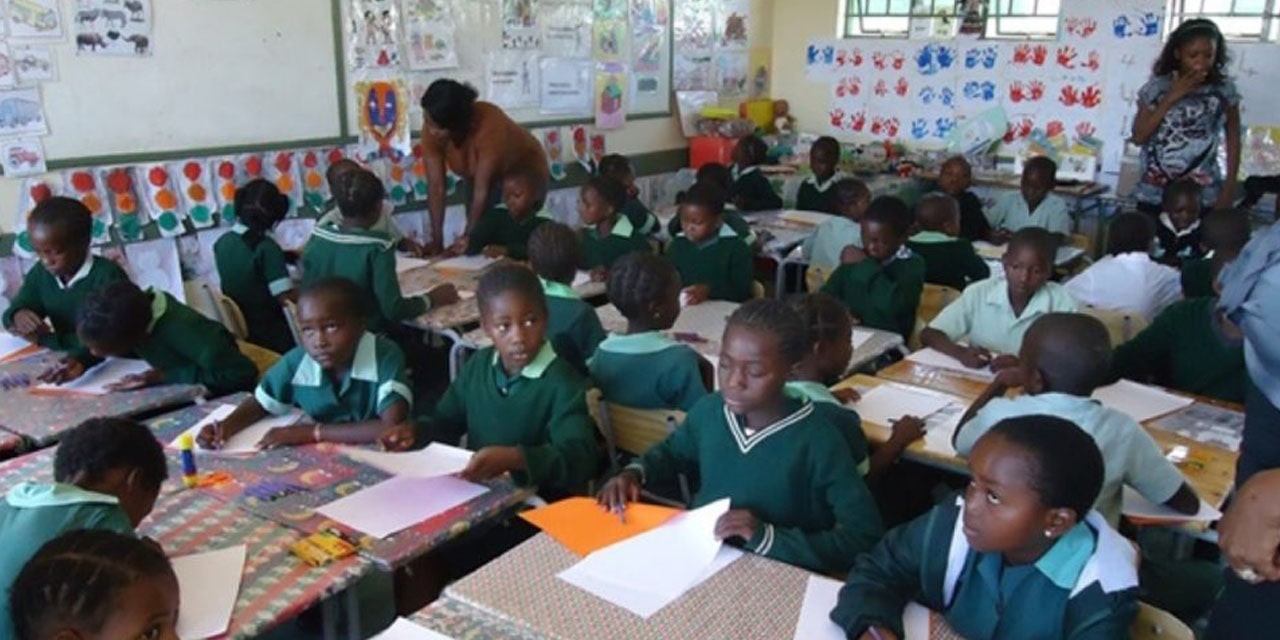Tujoromajo Kasuto
On Wednesday, the country was in a flurry of activity as parents rushed to find a school for their children as most public schools claim they do not have the additional capacity to accommodate more students.
The Windhoek Observer spoke with school administrators who expressed concern that they are being overwhelmed by the influx of parents looking for placement, as their classrooms are filled to the maximum capacity.
According to Josia Hitanwa, a teacher at Hage Geingob High School, the registration process has remained consistent for the past five years, and the school is fully enrolled in all grades.
He sympathized with the parents and acknowledged the enormous pressure they are under to find placement, but he stated that the majority of their students performed well and left no room for more.
He attributes the lack sufficient spacing for all learners primarily to infrastructure shortages and understaffing, noting that at least three new high schools and six primary schools are needed because the current number does not meet demand.
“Every year is a rush, and this number is unusual, but infrastructure and teacher availability do not meet demand, and we have too many teachers on the streets,”
Hitanwa observes that the teacher-learner ratio is not well attended to, as some teachers have over 300 students, reducing the quality of education they provide due to exhaustion.
“How many students can we accommodate in five days, Monday through Friday? The quality is low, and no matter how hard we try, teaching is ineffective because some issues do not receive the attention they require; this also makes setting up assessments difficult.”
Jossy renders a recommendations AS Level should be implemented in all government schools so that grade 12 students have a fair opportunity for spacing and do not have to run around in their final year.
“There was never enough training done, and the ministry of education needs to look into it to avoid this AS Level headache and poor performance,” says one student.
Woodie Jacobs, principal of Cosmos High School, expressed similar sentiments, saying that the restarting has been a very relaxed process and that everything is going well.
“Our school is good; parents are showing up in large numbers, students are returning, and people are looking for spaces, which is a bit of a challenge, but I believe we will succeed,” he said.
Meanwhile, the community private school Jacob Marengo, according to Principal Edo Triumph, does not have the problems that most schools do as they have space available from grades 8 to eleven.
He asserts that everything is going well despite the national financial situation, which makes it difficult for parents to apply to private schools.
Triumph also stated that, in comparison to other schools, they are the cheapest in the country, with a monthly fee of N$1000.
“The turnout has been moderate because it is difficult for parents to cope with private school fees, so even if the space is available, they are unable to afford it despite us being one of the most affordable schools that are open to all,” he explained.
Earlier this week Namibia National Teachers’ Union (NANTU) learners who could not make it to Tertiary Institution, should be given a second opportunity to repeat the grade 11, can give latitude to those learners to improve their performance.
NANTU acting President Daniel Humbu says the Ministry should strictly observe and adhere to the prescribed provisions of the staffing norms in order to ensure that effective teaching and learning should take place.
“The government should ensure that adequate resources are secured to enable Quality Public Education for Namibian child to achieve the goals on SDG 4 on Education.
Ensure that schools have well equipped infrastructures that optimized subject support and guidance as far as teaching, evaluation tools and management of the school is concerned. ICT, Libraries and science laboratories,” he said.
He further advised the Ministry to commit on CPD training for teachers to equip them with the necessary skills and knowledge aimed at increasing productivity, enhance good academic results and to review the bureaucratic process for the speedy recruitment of
teachers at schools.
This comes after 38,019 candidates who wrote the NSSCO examinations, only 5,812 qualified to enrol at institutions of higher learning, and only 8,133 qualify to proceed to NSSCAS level.




